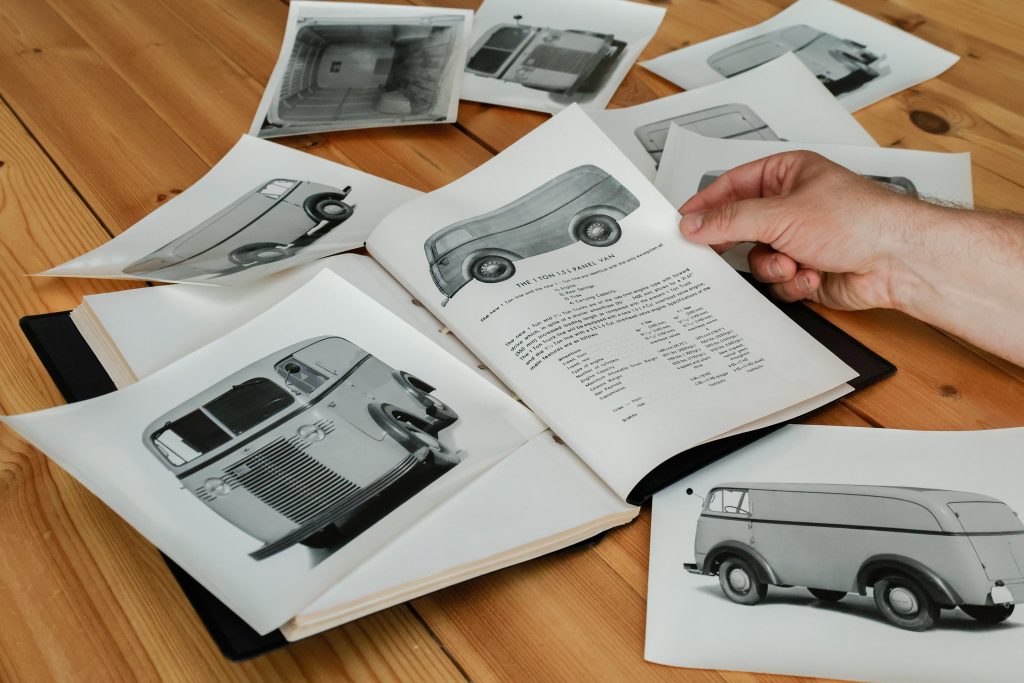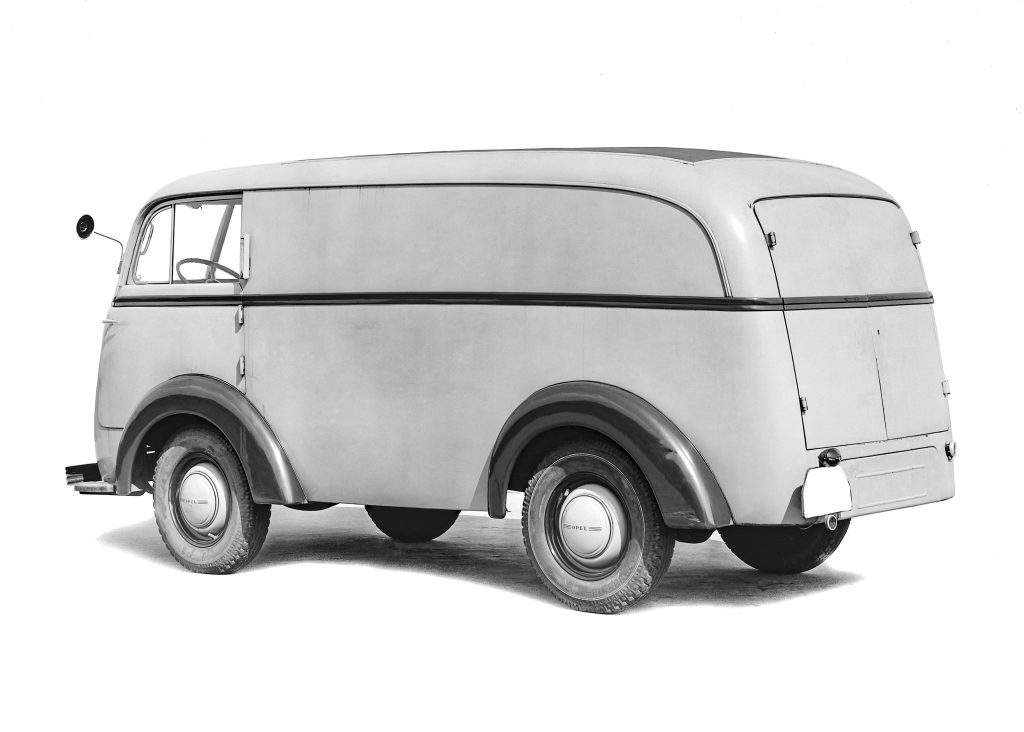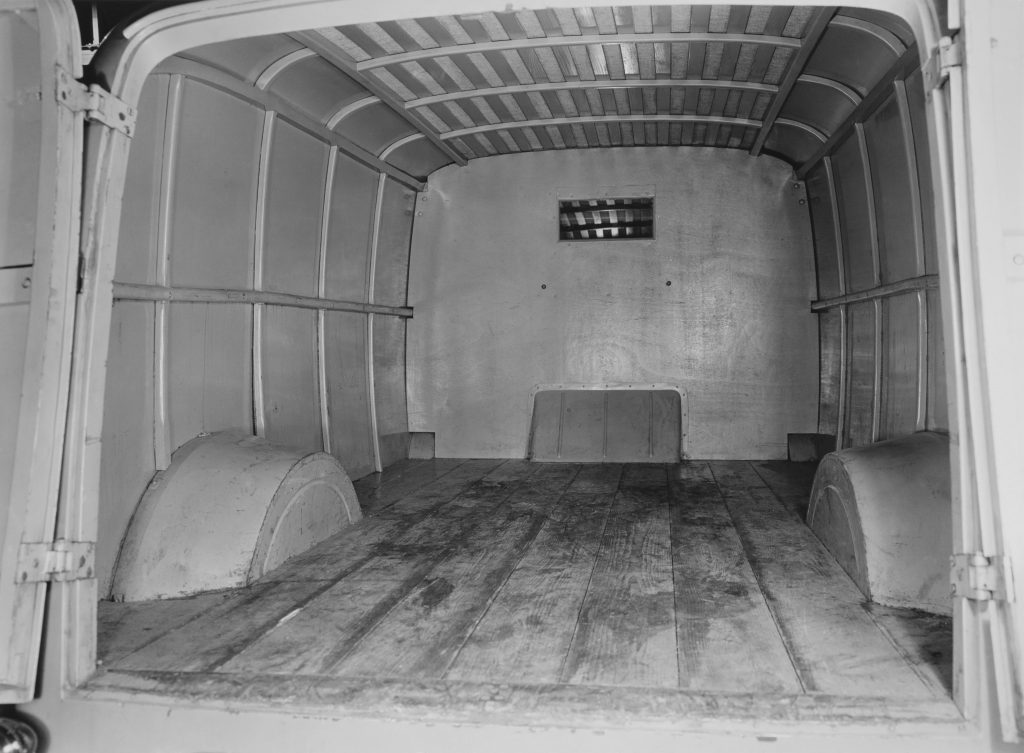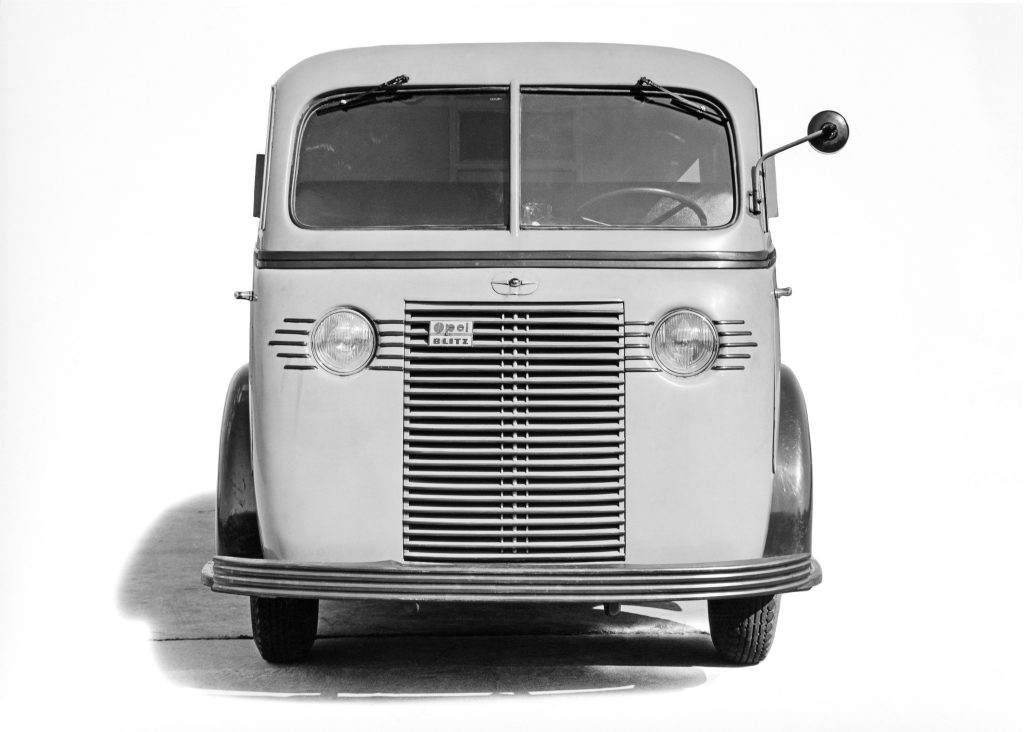A recent chance discovery of eight black and white prints at the Automobilia Ladenburg auction house in Germany revealed that more than 80 years ago, Opel was on the brink of launching a revolutionary vehicle that could have been the template for the modern panel van. And nobody in the company today had ever been aware of its existence.
The images, found by Opel historian Eckhart Bartels, show a driveable, production-ready concept from around 1937 known as the Opel Blitz Transporter. It was near-unique because, as well as looking strikingly modern, the one-tonne van employed a cab-over-engine design, which allowed optimum cargo space with minimal exterior dimensions, a format that didn’t become common in most markets until well into the post-war years.

Eckhart immediately informed Opel Classic in Ruesselsheim, who purchased the images, and after delving into their archive found management-board minutes from October 1937 in which the project – known as ‘1.5-23 COE’ – was mentioned. Further investigation turned up a brochure, which not only gave more details of the Transporter’s specification, but also Opel’s plans to develop it into a 1.5-tonne, twin-rear-wheel truck with a six-cylinder engine – and even a 15-seat minibus.

Opel was already Germany’s largest commercial vehicle manufacturer in the pre-war years, and its Blitz range of medium and heavy lorries was well-established and successful in the market. The Transporter, however, was to satisfy demand from smaller businesses for a lighter load carrier, but also offer a raft of innovations never packaged together before in such a vehicle. Front-wheel-drive transmission was used – unusual in itself, pre-war – to lower the cargo floor by doing away with a rear differential. The engine – an all-new 36bhp, 1488cc overhead-valve unit, plucked from the just-launched Opel Olympia passenger car – was an advanced design. And neat, user-friendly features, such as a wide driver’s-side mirror, a front bumper which curved around to double as steps for the driver and passenger, rear-hinged ‘suicide’ doors for ease of entry/egress, and a single rear unit that trebled as a brake, tail and registration light, all set the Transporter apart in a market where car-derived light commercials were the norm.

But the Transporter was clearly designed to be so much more than just a utilitarian load-carrier. While Opel was keen for it to visually link with its heavier brethren – hence the contrasting black mudguards also found on larger Blitz vehicles – its sleek, modernist shape sported an overtly art deco front end, with horizontal lines running across the grille, bumper and headlights. Having a commercial vehicle with a ‘face’ at the time would have been unthinkable, but as Bartels says, it looked like “a van with a sympathy factor.”
Other than the bulkhead, cargo floor and part of the roof, the Transporter was of steel construction. Bartels again: “It would be interesting to know how the Opel engineers mastered the challenges of noise protection and thermal insulation posed by a concept with an engine under the passenger compartment.” But he believes that road-testing must have been carried out with the prototype, because the images – although re-touched – show signs of use, such as scratches to the wing and a kink in the bumper.

So why was the Blitz Transporter never productionised? Well, even by 1937, Germany was preparing for a war in Europe, and the need for light commercial vehicles was not a priority. As a result, all effort was diverted to heavier lorries in the Blitz range, and the Transporter remained a prototype, though what became of it was never recorded. After hostilities finished in 1945, Opel, like so many other manufacturers, started to produce vehicles only slightly modified from its pre-war years. That meant revised Olympia and Kapitan passenger cars, and the Blitz 1.5 tonne lorry, initially. But while commercial vehicle production did continue, from the 1950s Opel focused on passenger car development.
Interestingly, General Motors had acquired both Opel and Vauxhall in the UK during the 1920s. Unlike today – where both brands fall under the Stellantis banner and collaborate heavily, sharing the manufacturing of common vehicles only differentiated by a badge – up until the mid-‘70s each company operated independently of each other. In fact, competitiveness between the two brands was positively encouraged by GM.

So how much of a coincidence is it that in 1952, Vauxhall’s Bedford commercial arm designed the most advanced, cab-over-engine LCV the UK had ever seen: the CA van? With its engine mounted low, encroaching into the cab (though not to the same extent as the Transporter concept, leaving a short ‘snout’ at the front) the CA also used an all-new overhead valve engine of near-1500cc taken from a passenger car (the Wyvern). However, unlike the Transporter, the CA did make production, and became this country’s best-selling panel van until Ford launched its Transit 13 years later. It makes you wonder…
Read more
Top Ten Classic Vans
Buyers Guide: Opel GT
Opel Manta ElektroMOD is the latest EV-converted classic








